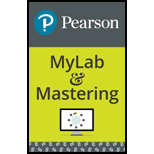
EP INTRODUCTORY CHEM.-MOD.MASTERINGCHEM
8th Edition
ISBN: 9780134554433
Author: CORWIN
Publisher: PEARSON CO
expand_more
expand_more
format_list_bulleted
Question
Chapter 18, Problem 3ST
Interpretation Introduction
Interpretation:
The option that corresponds to the particle that is emitted when an
Concept Introduction:
The elements whose nucleus decays spontaneously are known as radioactive elements. The decay is accompanied by the emission of alpha particles, beta particles, and gamma rays. All the elements which have an
Expert Solution & Answer
Want to see the full answer?
Check out a sample textbook solution
Students have asked these similar questions
>
You are trying to decide if there is a single reagent you can add that will make the following synthesis possible without any other
major side products:
1. ☑
CI
2. H3O+
O
Draw the missing reagent X you think will make this synthesis work in the drawing area below.
If there is no reagent that will make your desired product in good yield or without complications, just check the box under the
drawing area and leave it blank.
Click and drag to start drawing a
structure.
Explanation
Check
?
DO
18
Ar
B
© 2025 McGraw Hill LLC. All Rights Reserved. Terms of Use | Privacy Center | Accessibility
Don't use ai to answer I will report you answer
Consider a solution of 0.00304 moles of 4-nitrobenzoic acid (pKa = 3.442) dissolved in 25 mL water and titrated with 0.0991 M NaOH. Calculate the pH at the equivalence point
Chapter 18 Solutions
EP INTRODUCTORY CHEM.-MOD.MASTERINGCHEM
Ch. 18 - Prob. 1CECh. 18 - Prob. 2CECh. 18 - Prob. 3CECh. 18 - Prob. 1KTCh. 18 - Prob. 2KTCh. 18 - Prob. 3KTCh. 18 - Prob. 4KTCh. 18 - Prob. 5KTCh. 18 - Prob. 6KTCh. 18 - Prob. 7KT
Ch. 18 - Prob. 8KTCh. 18 - Prob. 9KTCh. 18 - Prob. 10KTCh. 18 - Prob. 11KTCh. 18 - Prob. 12KTCh. 18 - Prob. 13KTCh. 18 - Prob. 14KTCh. 18 - Prob. 15KTCh. 18 - Prob. 16KTCh. 18 - Prob. 17KTCh. 18 - Prob. 18KTCh. 18 - Prob. 19KTCh. 18 - Prob. 20KTCh. 18 - Prob. 21KTCh. 18 - Prob. 22KTCh. 18 - Prob. 23KTCh. 18 - Prob. 1ECh. 18 - Prob. 2ECh. 18 - Prob. 3ECh. 18 - Prob. 4ECh. 18 - Prob. 5ECh. 18 - Prob. 6ECh. 18 - Prob. 7ECh. 18 - Prob. 8ECh. 18 - Prob. 9ECh. 18 - Prob. 10ECh. 18 - Prob. 11ECh. 18 - Prob. 12ECh. 18 - Prob. 13ECh. 18 - Prob. 14ECh. 18 - Prob. 15ECh. 18 - Prob. 16ECh. 18 - Prob. 17ECh. 18 - Prob. 18ECh. 18 - Prob. 19ECh. 18 - Prob. 20ECh. 18 - Prob. 21ECh. 18 - Prob. 22ECh. 18 - Prob. 23ECh. 18 - Prob. 24ECh. 18 - Prob. 25ECh. 18 - Prob. 26ECh. 18 - Prob. 27ECh. 18 - Prob. 28ECh. 18 - Prob. 29ECh. 18 - Prob. 30ECh. 18 - Prob. 31ECh. 18 - Prob. 32ECh. 18 - Prob. 33ECh. 18 - Prob. 34ECh. 18 - Prob. 35ECh. 18 - Prob. 36ECh. 18 - Prob. 37ECh. 18 - Prob. 38ECh. 18 - Prob. 39ECh. 18 - Prob. 40ECh. 18 - Prob. 41ECh. 18 - Prob. 42ECh. 18 - Prob. 43ECh. 18 - Prob. 44ECh. 18 - Prob. 45ECh. 18 - Prob. 46ECh. 18 - Prob. 47ECh. 18 - Prob. 48ECh. 18 - Prob. 49ECh. 18 - Prob. 50ECh. 18 - Prob. 51ECh. 18 - Prob. 52ECh. 18 - Prob. 53ECh. 18 - Prob. 54ECh. 18 - Prob. 55ECh. 18 - Prob. 56ECh. 18 - Prob. 57ECh. 18 - Prob. 58ECh. 18 - Prob. 1STCh. 18 - Prob. 2STCh. 18 - Prob. 3STCh. 18 - Prob. 4STCh. 18 - Prob. 5STCh. 18 - Prob. 6STCh. 18 - Prob. 7STCh. 18 - Prob. 8STCh. 18 - Prob. 9STCh. 18 - Prob. 10STCh. 18 - Prob. 11STCh. 18 - Prob. 12STCh. 18 - Prob. 13STCh. 18 - Prob. 14STCh. 18 - Prob. 15ST
Knowledge Booster
Similar questions
- What is the name of the following compound? SiMe3arrow_forwardK Draw the starting structure that would lead to the major product shown under the provided conditions. Drawing 1. NaNH2 2. PhCH2Br 4 57°F Sunny Q Searcharrow_forward7 Draw the starting alkyl bromide that would produce this alkyne under these conditions. F Drawing 1. NaNH2, A 2. H3O+ £ 4 Temps to rise Tomorrow Q Search H2arrow_forward
arrow_back_ios
SEE MORE QUESTIONS
arrow_forward_ios
Recommended textbooks for you
 Chemistry for Today: General, Organic, and Bioche...ChemistryISBN:9781305960060Author:Spencer L. Seager, Michael R. Slabaugh, Maren S. HansenPublisher:Cengage Learning
Chemistry for Today: General, Organic, and Bioche...ChemistryISBN:9781305960060Author:Spencer L. Seager, Michael R. Slabaugh, Maren S. HansenPublisher:Cengage Learning Chemistry: The Molecular ScienceChemistryISBN:9781285199047Author:John W. Moore, Conrad L. StanitskiPublisher:Cengage Learning
Chemistry: The Molecular ScienceChemistryISBN:9781285199047Author:John W. Moore, Conrad L. StanitskiPublisher:Cengage Learning Living By Chemistry: First Edition TextbookChemistryISBN:9781559539418Author:Angelica StacyPublisher:MAC HIGHER
Living By Chemistry: First Edition TextbookChemistryISBN:9781559539418Author:Angelica StacyPublisher:MAC HIGHER Introductory Chemistry: An Active Learning Approa...ChemistryISBN:9781305079250Author:Mark S. Cracolice, Ed PetersPublisher:Cengage Learning
Introductory Chemistry: An Active Learning Approa...ChemistryISBN:9781305079250Author:Mark S. Cracolice, Ed PetersPublisher:Cengage Learning Introductory Chemistry: A FoundationChemistryISBN:9781337399425Author:Steven S. Zumdahl, Donald J. DeCostePublisher:Cengage Learning
Introductory Chemistry: A FoundationChemistryISBN:9781337399425Author:Steven S. Zumdahl, Donald J. DeCostePublisher:Cengage Learning Chemistry: Principles and PracticeChemistryISBN:9780534420123Author:Daniel L. Reger, Scott R. Goode, David W. Ball, Edward MercerPublisher:Cengage Learning
Chemistry: Principles and PracticeChemistryISBN:9780534420123Author:Daniel L. Reger, Scott R. Goode, David W. Ball, Edward MercerPublisher:Cengage Learning

Chemistry for Today: General, Organic, and Bioche...
Chemistry
ISBN:9781305960060
Author:Spencer L. Seager, Michael R. Slabaugh, Maren S. Hansen
Publisher:Cengage Learning

Chemistry: The Molecular Science
Chemistry
ISBN:9781285199047
Author:John W. Moore, Conrad L. Stanitski
Publisher:Cengage Learning

Living By Chemistry: First Edition Textbook
Chemistry
ISBN:9781559539418
Author:Angelica Stacy
Publisher:MAC HIGHER

Introductory Chemistry: An Active Learning Approa...
Chemistry
ISBN:9781305079250
Author:Mark S. Cracolice, Ed Peters
Publisher:Cengage Learning

Introductory Chemistry: A Foundation
Chemistry
ISBN:9781337399425
Author:Steven S. Zumdahl, Donald J. DeCoste
Publisher:Cengage Learning

Chemistry: Principles and Practice
Chemistry
ISBN:9780534420123
Author:Daniel L. Reger, Scott R. Goode, David W. Ball, Edward Mercer
Publisher:Cengage Learning